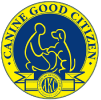the four quadrants used
at traction
of Operant Conditioning Theory.
Positive reinforcement is when your dog receives a reward that encourages them to repeat a behavior we like.
For example, you give your dog a treat for laying down when asked.
Negative reinforcement is when your dog is rewarded by the release of pressure to encourage them to repeat a behavior we like.
For example, the leash goes slack when your dog moves towards you instead of pulling.
Positive punishment is when something your dog dislikes happens to discourage them from repeating an unwanted behavior.
For example, you spray your dog with a spray bottle of water when they jump on the countertop.
Negative punishment is when something your dog likes is taken away to discourage them from repeating an unwanted behavior.
For example, you stop petting your dog when they jump on you.
why don't we use
positive reinforcement (+r) only?
It allows us to give feedback on what we do want but does not allow any feedback on what we don’t want or what is dangerous. This muddles communication and fails to stop many self-rewarding behaviors like stealing food off counters.
It’s important to set behaviors while dogs are new to the family and to set realistic expectations for your family. Furthermore, many of the dogs we train simply do not have months or years to stop acting aggressively or dangerously. If your dog acts aggressively towards dogs, people, bikes, or otherwise, you are at risk of expensive fines and court fees for small offenses all the way up to prison time and euthanasia if someone gets injured.





